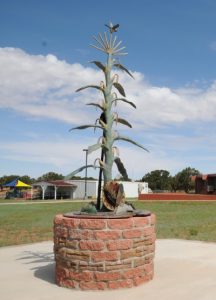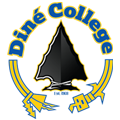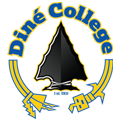Emergency Response Plan


RESPONSIBILITIES:
The Incident Commander is solely responsible for emergency/disaster operations and shall remain at the Command Post to observe and direct all operations.
Ensure the safety of students, faculty, staff, and others on campus. Lead by example: your behavior sets tone for staff and students.
START-UP ACTIONS:
- Obtain your personal safety equipment (i.e., hard hat, vest, clipboard with job description sheet).
- Assess the type and scope of emergency.
- Determine the threat to human life and structures.
- Implement the emergency plan and hazard-specific procedures.
- Develop and communicate an incident action plan with objectives and a timeframe to meet those objectives.
- Activate functions and assign positions as needed.
- Fill in the Incident Assignments form.
- Appoint a backup or alternate Campus/Center Point of Contact based on official Delegation of Authority.
Ongoing Operational Duties:
CLOSING DOWN:
- Continue to monitor and assess the total school situation:
- View the site map periodically for search and rescue progress and damage assessment information.
- Check with Diné College Administration and local Emergency Response contacts for periodic updates.
- Reassign personnel as needed.
- Report (through Communications) to the school district on the status of students, staff, and facility, as needed (Site Status Report).
- Develop and communicate revised incident action plans as needed.
- Begin student release when appropriate.
NOTE: No student should be released until emergency has been cleared and student accounting is complete. Never send students home before the end of the regular school day unless directed by the superintendent, except at the request of parent/ guardian.
- Authorize the release of information.
- Utilize your back up; plan and take regular breaks (5-10 minutes per hour). During break periods, relocate away from the Command Post.
- Plan regular breaks for all staff and volunteers.
- Take care of your caregivers!
- Release faculty as appropriate and per Diné College guidelines. (By law, during a disaster, faculty and staff become disaster workers.)
- Remain on and in charge of your campus/center until redirected or released by the appropriate Diné College Administration.
- Authorize deactivation of sections, branches, or units when they are no longer required.
- At the direction of the Diné College President or Administration, deactivate the entire emergency response. If the fire department or other outside agency calls an “all clear,” contact the college before taking any further action.
- Ensure that any open actions not yet completed will be taken care of after deactivation.
- Ensure the return of all equipment and reusabie supplies to Logistics.
- Close out all logs. Ensure that all logs, reports, and other relevant documents are completed and provided to the Documentation Unit.
- Announce the termination of the emergency and proceed with recovery operations if necessary.
RESPONSIBILITIES:
The Incident Commander is solely responsible for emergency/disaster operations and shall remain at the Command Post to observe and direct all operations.
Ensure the safety of students, faculty, staff, and others on campus. Lead by example: your behavior sets tone for staff and students.
START-UP ACTIONS:
- Obtain your personal safety equipment (i.e., hard hat, vest, clipboard with job description sheet).
- Assess the type and scope of emergency.
- Determine the threat to human life and structures.
- Implement the emergency plan and hazard-specific procedures.
- Develop and communicate an incident action plan with objectives and a timeframe to meet those objectives.
- Activate functions and assign positions as needed.
- Fill in the Incident Assignments form.
- Appoint a backup or alternate Campus/Center Point of Contact based on official Delegation of Authority.
- Ongoing Operational Duties:
CLOSING DOWN:
- Continue to monitor and assess the total school situation:
- View the site map periodically for search and rescue progress and damage assessment information.
- Check with Diné College Administration and local Emergency Response contacts for periodic updates.
- Reassign personnel as needed.
- Report (through Communications) to the school district on the status of students, staff, and facility, as needed (Site Status Report).
- Develop and communicate revised incident action plans as needed.
- Begin student release when appropriate.
- NOTE: No student should be released until emergency has been cleared and student accounting is complete. Never send students home before the end of the regular school day unless directed by the superintendent, except at the request of parent/ guardian.
Authorize the release of information. - Utilize your back up; plan and take regular breaks (5-10 minutes per hour). During break periods, relocate away from the Command Post.
- Plan regular breaks for all staff and volunteers.
Take care of your caregivers!
- Release faculty as appropriate and per Diné College guidelines. (By law, during a disaster, faculty and staff become disaster workers.)
- Remain on and in charge of your campus/center until redirected or released by the appropriate Diné College Administration.
- Authorize deactivation of sections, branches, or units when they are no longer required.
- At the direction of the Diné College President or Administration, deactivate the entire emergency response. If the fire department or other outside agency calls an “all clear,” contact the college before taking any further action.
- Ensure that any open actions not yet completed will be taken care of after deactivation.
- Ensure the return of all equipment and reusable supplies to Logistics.
- Close out all logs. Ensure that all logs, reports, and other relevant documents are completed and provided to the Documentation Unit.
- Announce the termination of the emergency and proceed with recovery operations if necessary.
COMMAND POST EQUIPMENT/SUPPLIES:
- Campus map
- Master keys
- Staff, faculty, and student rosters
- Disaster response forms
- Emergency plan
- Duplicate rosters (two sets)
- Tables and chairs (if Command Post is outdoors)
- Vests (if available)
- Job description clipboards
- Command Post tray (pens, etc.)
- College radios
- Campus two-way radios
- AM/FM radio (battery)
- Builhorn

